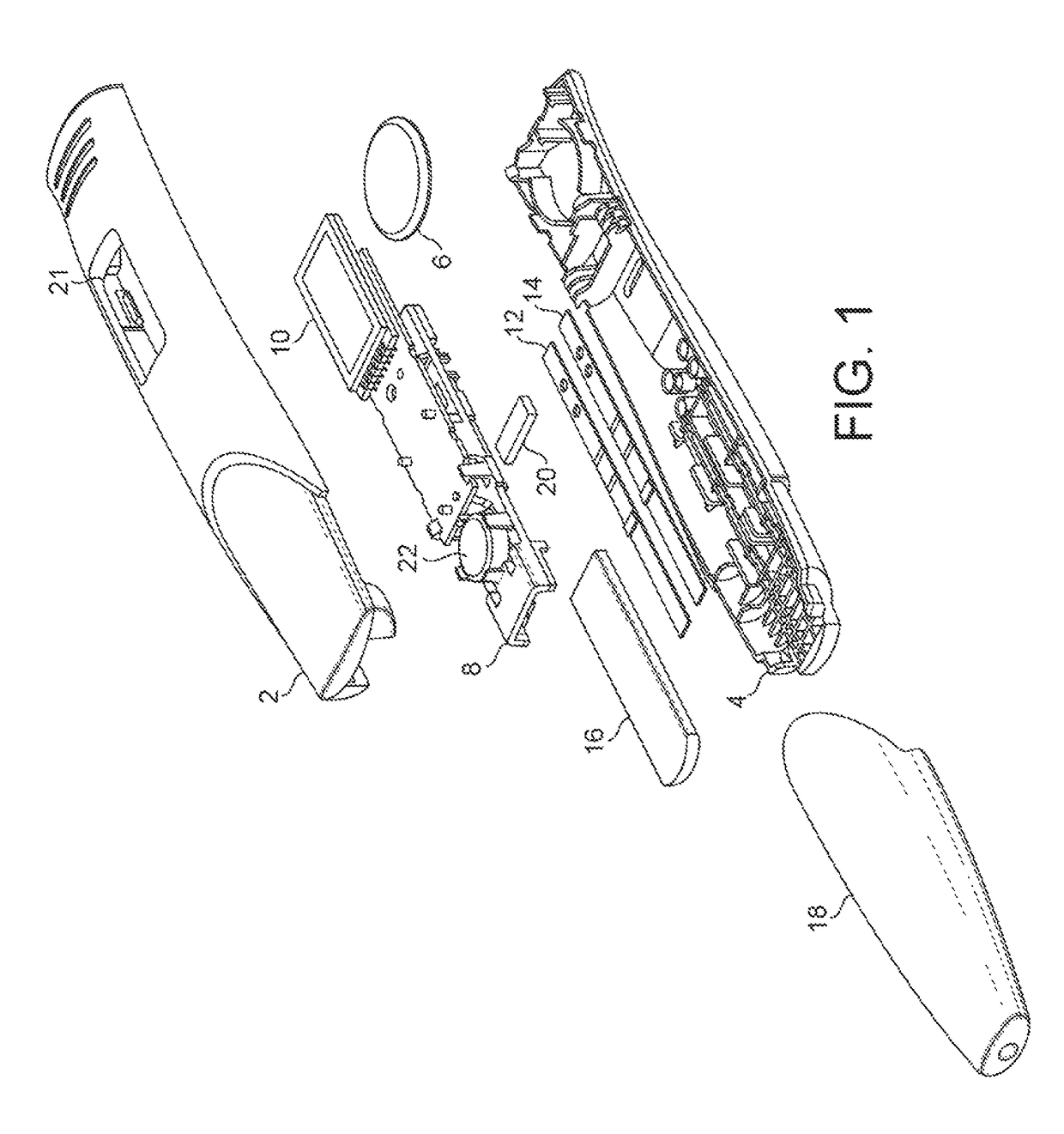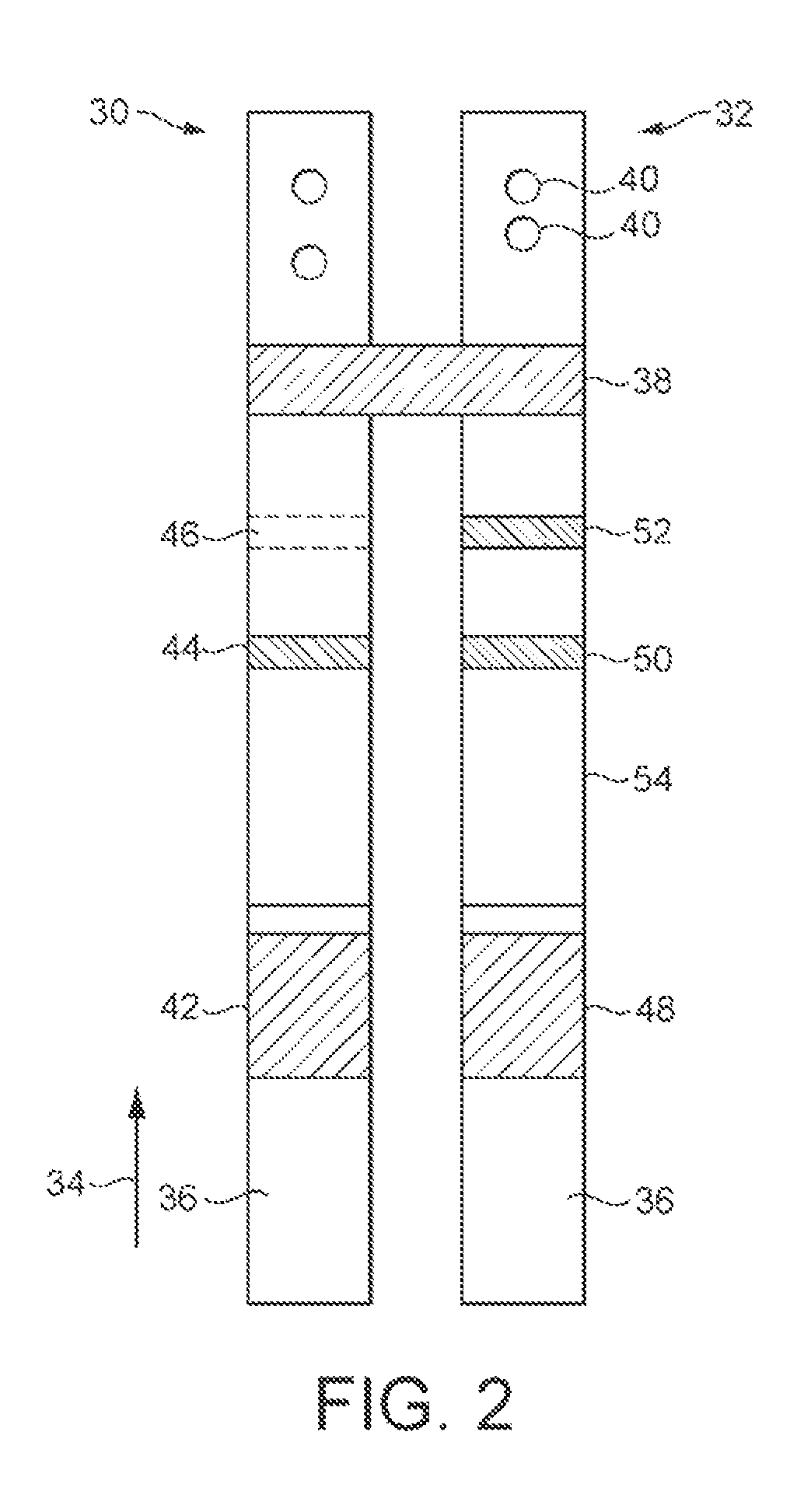Pregnancy test device and method
a test device and pregnancy technology, applied in the field of pregnancy test devices, can solve the problems of false positive results, unsatisfactory degree of subjectivity, and reduced specificity of the test, and achieve the effects of avoiding false negative results, high hcg levels, and greater sensitivity
- Summary
- Abstract
- Description
- Claims
- Application Information
AI Technical Summary
Benefits of technology
Problems solved by technology
Method used
Image
Examples
example 1
[0118]In initial experiments, urinary hCG, urinary FSH & urinary P3G were measured in 119 non-pregnant volunteers in a peri & post-menopausal (PP, age 41-90) cohort of which a total of 50 samples had [hCG]≥2.5 mIU / ml and from 72 pregnant volunteers who carried pregnancy successfully to term (age 21-40) from Day −7 EMP (expected missed period) to Day +3 EMP. Samples were tested where available leading to a total of 589 early pregnancy samples (“EPS”), of which 434 had [hCG]≥2.5 mIU / ml, as evaluated by a PerkinElmer® Delfia® assay.
[0119]Analysis of these results showed that, using a urinary hCG threshold level of at least 2.5 mIU / ml to define pregnancy coupled with both a FSH threshold of 10 mIU / ml or less and a P3G threshold of at least 4 μg / ml, a true pregnancy could be called with 100% positive prediction (no false positives in the non-pregnant cohort). The threshold levels of the three analytes used to define pregnancy, as established by this study, might change with a bigger data...
example 2
[0123]In one embodiment of the invention, a pregnancy test device would comprise a lateral flow immunoassay constructed in a two strip nitrocellulose (NC) format, with an hCG sandwich assay formatted onto a first strip. A FSH sandwich assay and a competitive P3G assay would be formatted on a second separate strip with two distinct capture zones. Both strips would run simultaneously via a common sample application zone contacting a porous medium which would contact both nitrocellulose strips. The device would digitally measure the signal response (bound label) on the NC capture zones in response to the amount of analyte of interest. An in-built algorithm would give a digitally displayed response on the screen to the end-user (Pregnant / Non-Pregnant and / or a gestational age) depending on the levels of analytes.
[0124]An example of a possible algorithm is illustrated schematically in FIG. 6. It should be noted that the algorithm presented in FIG. 6 is only one embodiment, and many other ...
example 3
[0125]Referring to FIG. 1, which shows an exploded view of one embodiment, a device in accordance with the present application comprises a two-part housing, formed of synthetic plastics material. The housing has a top part 2 and a bottom part 4. The housing is formed of an opaque plastics material such as polycarbonate or polypropylene. If necessary an opacifier may be included.
[0126]Within the housing is a power source, such as small button cell 6, which delivers electrical power to the components mounted on a printed circuit board assembly (PCBA), 8. These include, in particular, one or more LEDs and photodiodes and a liquid crystal display 10. The components mounted on the PCBA 8 include those necessary to read the results of assays performed on the two lateral flow assay strips mounted within the housing. One of the strips 12 is for performing an hCG assay, and the other strip 14 is for performing both an FSH and a preganediol-3-glucuronide, (P3G) assay.
[0127]The top and bottom ...
PUM
| Property | Measurement | Unit |
|---|---|---|
| time | aaaaa | aaaaa |
| size | aaaaa | aaaaa |
| particle mean diameter | aaaaa | aaaaa |
Abstract
Description
Claims
Application Information
 Login to View More
Login to View More - R&D
- Intellectual Property
- Life Sciences
- Materials
- Tech Scout
- Unparalleled Data Quality
- Higher Quality Content
- 60% Fewer Hallucinations
Browse by: Latest US Patents, China's latest patents, Technical Efficacy Thesaurus, Application Domain, Technology Topic, Popular Technical Reports.
© 2025 PatSnap. All rights reserved.Legal|Privacy policy|Modern Slavery Act Transparency Statement|Sitemap|About US| Contact US: help@patsnap.com



